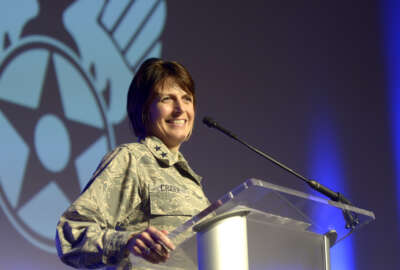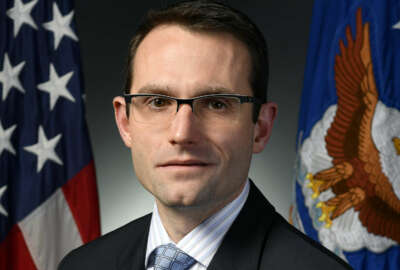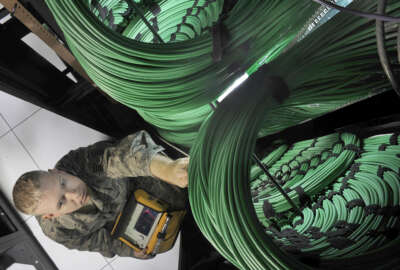
Space Force lays out plan to become military’s first ‘digital service’
New vision document outlines four lines of effort for how the newest military service intends to pull off a top-to-bottom digital transformation.
Leaders of the Space Force have already said they want to build the new organization as the U.S. military’s first “digital service.” Now, they’re rolling out some details on what exactly that means. A new document, published Thursday, explains four separate lines of effort delineating how the service intends to pull off a digital transformation from top-to-bottom.
The nation’s sixth military service said the push to adopt a digital mindset from the outset comes from two main factors: The need to move quickly to keep U.S. technological advantages in space, and the fact that it’s by far the smallest military service and intends to stay that way.
The “digital” construct starts with the way the Space Force imagines its headquarters organizations. Service leaders said they want to prevent themselves from building up cumbersome bureaucratic structures and processes, and maybe even eliminate some of the ones they already have.
“This is where we’re really zeroing in on how we can we leverage data and analysis tools to streamline the processes by which we make decisions, use automation to ensure that our processes can move faster, and eliminate manual steps in our processes,” said Maj. Gen. Kim Crider, the Space Force’s chief technology and innovation officer. “How can we use collaboration tools to bring people together across multiple levels the organization in one single setting? By bringing people together, this is how we’re breaking the bureaucracy. We’re not waiting for a problem to happen — we’re being more proactive and we’re coordinating much more effectively and much more efficiently.”
Meanwhile, at the operational level, the Space Force is building what it calls “combat development teams,” charged with bringing new digital tools to help solve problems more quickly. For instance, the service plans to equip them with digital twins of every new system the Space Force will deploy so service members can be ready to use it on the day it’s fielded.
That idea is closely related to the digital engineering line of effort in the new vision document. The Air Force has already laid much of the groundwork for that process by incorporating “digital threads” into new systems like the Ground Based Strategic Deterrent.
Crider said the Space Force will do the same with three of its own pathfinder projects for satellite communications systems later this year, using a cloud-based digital engineering platform operated by the Space and Missile Systems Center in Los Angeles.
“This ecosystem will provide a comprehensive way for them to develop and design their requirements in a digital format and be able to collaborate with industry partners,” she said. “This year, as that environment stands up, we will have an unclassified capability and a secret-level capability, and these programs will be able to exchange virtualized models and data with industry partners. They’ll be able to participate in virtual readiness reviews and design reviews. And that really gets us on the road to how to operate in a digital engineering manner; how to use authoritative models and data as a mechanism for coordinating, collaborating, running through various design options, and really optimizing the delivery of those capabilities before we actually build a physical artifact.”
And crucially, according to Gen. John Raymond, the chief of the Space Force, those digital threads are meant to persist throughout a system’s entire lifecycle, not just the procurement and design phases.
“We’ve spent the last year building a large capability development process, and it begins with force design, moves to requirements, then moves to acquisition, and then testing,” he said. “So this digital thread is going to be important through that entire ecosystem. It’s the force design right up front, it’s doing requirements in a different way that allows us to go fast, it’s the digital engineering part of acquisition. And then we’ll take all that data and be able to test these capabilities, and then do it again, and move fast and iterate.”
Another section of the new digital vision focuses on the workforce.
The service said it’s now funded spots at the Department of the Air Force’s Digital University for all of its personnel; 30% of them have finished the coursework so far.
“We’re also implementing artificial intelligence techniques to speed up our hiring processes. In particular, we’re using natural language processing to review sort and prioritize thousands of applications in hours, versus the days to weeks that it would normally take,” she said. “Becoming a digital service is everyone’s responsibility. To fulfill that, our Space Force members — military and civilian — must possess the necessary digital aptitude to help lead the transformation to being an interconnected, innovative, digitally-dominant force.”
Copyright © 2024 Federal News Network. All rights reserved. This website is not intended for users located within the European Economic Area.
Jared Serbu is deputy editor of Federal News Network and reports on the Defense Department’s contracting, legislative, workforce and IT issues.
Follow @jserbuWFED





